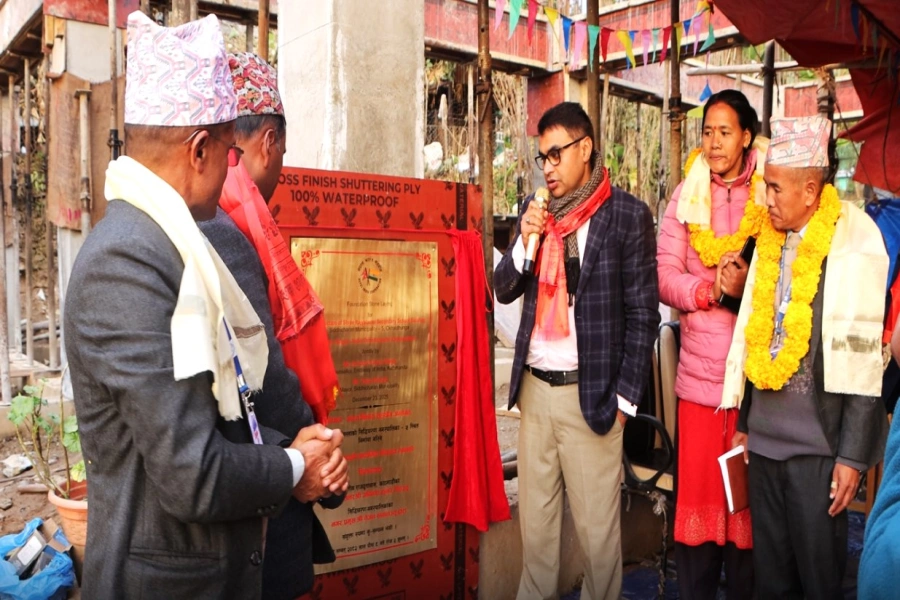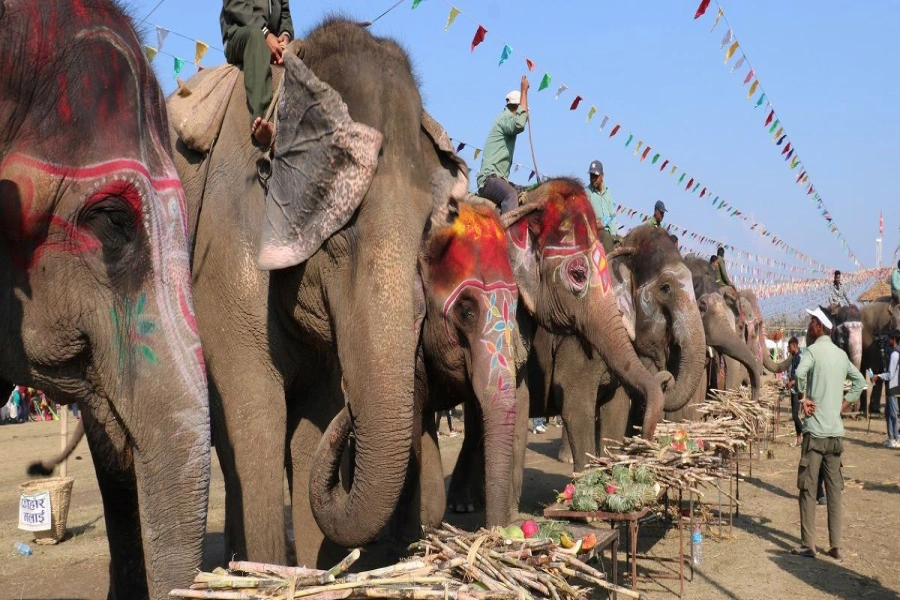Despite forecasts from the government agencies concerned that Nepal would receive more than the three-decade average rainfall in the 2023-24 winter, it rained very little in Nepal this winter. According to the Department of Hydrology and Meteorology, the country has received only 12.1 mm of rainfall this winter so far (from 23 December 2023 to 26 February 2024). This is too little given the country’s average winter rainfall of 60.1 mm. The three coldest months - December, January and February - form the winter season in Nepal and with just a couple of days to go before February ends, winter has technically come to an end in the country.
This means that the crisis that the country has been facing due to the lack of enough winter rains for the past some years continues. With just 12.9 mm of rain, the lowest winter precipitation recorded since 2008, last year's winter was almost as dry as this year’s. Available data shows that as many as 12 out of the last 18 winters witnessed less than average rainfall. What’s more, eight out of those 12 winters had droughts. For the past few years, the trend is that winter rainfall is pushed towards the end of the season, more often than not, falling all at once.
A drought is a period without rainfall and is characterized by a total rainfall of less than 75 percent of the annual average. The too little rainfall in winter this year too indicates that Nepal is heading for another winter drought. Some 80 percent of the annual rainfall in Nepal occurs during the monsoon months from June to September. Similarly, winter generally sees only up to 4 percent of the average annual rain. This means that two or three instances of heavy rain are normal for winter months in Nepal which was the case not very long ago.
Tips to Keep Skin Soft and Glowing In Winter

But the phenomenon called climate change has changed many things in Nepal, of course, for the worse. It has now become clear that winter rainfall has been declining while winter temperatures have been rising. Similarly, private power producers have already announced a significant decline in energy production from their hydropower plants. Most of the power projects in Nepal are run-of-the-river type and, due to very little winter rain and snow, all rivers are running low at present. In other words, Nepal’s total hydropower generation capacity has decreased by at least 20 percent. This shortfall has to be met by electricity imports from India. In other words, one-fourth of the total electricity demand in the country at present is being met through imports from the southern neighbor.
A winter drought also means that the water sources, especially those originating in the Chure hills range, dry up. Similarly, the water levels in the rivers are likely to decrease, making the situation even direr. Farmers across Nepal also rely on winter rain more than they do on irrigation systems. According to agricultural experts, the lack of rainfall will lead to a decrease in the winter crop output. The production of wheat, barley, mustard, lentils, citrus and vegetables could be significantly reduced because of winter drought. This could, in turn, lead to food scarcity and increased prices.
The most vulnerable and marginalized communities are likely to be the hardest hit by this consequence of climate change. The situation clearly shows that the government will have to pay special attention to the situation in some pocket areas in the six districts – Dhading, Gorkha, Mugu, Kalikot, Humla and Bajura – as these districts are considered highly food-insecure. These districts depend on external assistance for their food and non-food needs even in normal times; we can easily imagine the situation there in times of ‘general food insecurity across the country’.
Therefore, we need to prepare for the impending food shortage and the potential increase in climate-related disasters. And the government, on its part, must work with international organizations, NGOs, and other partners to mitigate the impacts of the crisis.
Meanwhile, climate experts have warned that the lack of winter rains is also going to affect the country's climatic system and the forest resources, leading to an increase in air pollution. Also, the lack of rain in winter increases the chances of wildfire as happened in the winter of 2021-22 when the Air Quality Index in Kathmandu soared to record-breaking 700. As it is, air pollution in Nepal gets worse during winter months in Tarai and Kathmandu.
Needless to say, the culprit behind these abnormal climatic conditions is climate change which calls for collective action to mitigate its consequences. As climate-related disasters are expected to increase in the coming days, the government must provide pre-disaster information and make preparations to mitigate their effects. Let’s hope the government has learnt its lessons from the flood devastation in Melamchi in 2021.





































